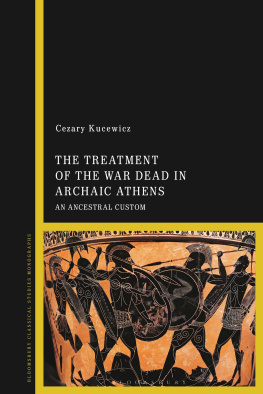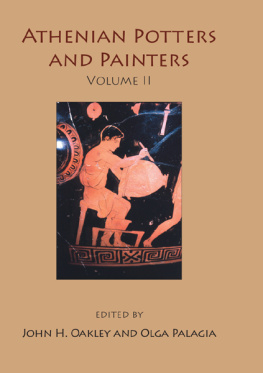This volume is dedicated to Michalis Tiverios

The honoree at the conference (Photo: June Allison)
Published by
Oxbow Books, Oxford
Oxbow Books and the individual authors, 2009
ISBN 978-1-84217-350-3
EPUB ISBN: 978-1-78297-322-5
PRC ISBN: 978-1-78297-323-2
A CIP record for this book is available from the British Library
This book is available direct from
Oxbow Books, Oxford, UK
(Phone: 01865-241249, Fax: 01865-794449
and
The David Brown Book Company
PO Box 511, Oakville, CT 06779, USA
Phone:860-945-9329; Fax: 860-945-9468
or from our website
www.oxbowbooks.com
Printed in Great Britain by
The Short Run Press, Exeter
Contents
Amalia Avramidou |
Martin Bentz |
Elke and Hans-Joachim Bhr |
Sheramy D. Bundrick |
Stamatis Fritzilas |
Filippo and Innocenza Giudice |
. K |
Kleopatra Kathariou |
Eurydice Kefalidou |
Sonia Klinger |
Bettina Kratzmueller |
Bettina Kreuzer |
Elizabeth Langridge-Noti |
Anna A. Lemos |
Adrienne Lezzi-Hafter |
Kathleen M. Lynch |
Claire L. Lyons |
Jean-Jacques Maffre |
Susan B. Matheson |
Heide Mommsen |
Jenifer Neils |
J. Michael Padgett |
John K. Papadopoulos |
Maria Pipili |
Susan I. Rotroff |
H.A. Shapiro |
Robert F. Sutton |
M T |
Olga V. Tugusheva |
Panos Valavanis |
Dyfri Williams |
Z |
Foreword
The papers in this volume are based on the lectures given at the international conference Athenian Potters and Painters II, which was held in the American School of Classical Studies at Athens on March 2830, 2007. The subject of the conference was the study of Athenian painted pottery, the finest ware in the ancient Mediterranean during the Archaic and Classical periods of Greece. Athenian vase-paintings are not only the single most important source of images of Greek everyday life and mythology, but also a crucial dating tool for archaeologists. Yet, even though new examples of this citys beautiful black- and red-figure vases are found constantly in Greece, Italy and elsewhere, only this conference and its predecessor, Athenian Potters and Painters, held at the American School of Classical Studies in 1994, ever focused on this pottery. The rationale for both conferences was that it is best to organize them in Athens, where the pottery was made. Holding a second conference on the subject is justified by the large amount of new material and by the dynamic appearance of a younger generation of scholars dealing with the subject.
Thirty-three people were invited to speak, eleven of whom were Greek. One of the goals of the conference was to bring together a diverse group of scholars who varied in age, nationality and the approaches they took to the study of Greek vases. We specifically invited a number of young Greek and American scholars to participate, since the earlier conference had served as a springboard into the profession for several young scholars. The following countries were also represented by speakers: Austria, Belgium, England, France, Germany, Israel, Italy, Russia, Switzerland, and the United States.
Another of our goals was to represent as many different approaches to the study of Attic painted pottery and as much new, important unpublished material as possible. Subject areas included not only the study of potters and painters and their workshops, but also the study of shape, ornament, subject matter, chronology, export, excavation pottery, context, and the influence of Athenian vases on pottery from other regions of the Mediterranean and vice versa.
The conference took place in Cotsen Hall, the new auditorium of the American School of Classical Studies at Athens. We are very grateful to Stephen V. Tracy, the then Director of the American School, and other members of the staff for their support, particularly Pandelis Panos, who provided crucial help with raising the funds to hold the conference. For financial support we are indebted not only to the American School, but also to Alpha Bank, whose very generous subsidy allowed us to hold a first class conference.
The conference and this volume are dedicated to Michalis Tiverios. He, as the honorees of the previous conference Erika Simon and John Boardman has greatly contributed to the study of Greek vase-painting, now only by his publications, but also through the students he has produced and placed across the world. Like his predecessors, he is an international figure of great renown and a very generous colleague to us all.
The abbreviations and notation system can be found in the Archologischer Anzeiger 1997, 611628. We chose to use the same system as the earlier volume for continuity and for its succinct nature. The abbreviations of ancient literary sources are those of the Oxford Classical Dictionary3 (1996). The following additional abbreviations are used:
ABV | J.D. Beazley, Attic Black-Figure Vase-Painters (1956). |
ARV2 | J.D. Beazley, Attic Red-Figure Vase-Painters2 (1963). |
Para | J.D. Beazley, Paralipomena (1971). |
BAdd2 | T.H. Carpenter, Beazley Addenda2 (1989). |
John H. Oakley
Olga Palagia
1 Dionysos in Context: Two Attic Red-figure Kraters of the Early Fourth Century BC
Amalia Avramidou
The iconography of Dionysos has always fascinated scholars of Attic vase-painting, and even today his multi-faceted character continues to fuel our interests as he occurs in a variety of myths and representations related to theater, ritual and, of course, wine-drinking. In this paper I would like to examine two Attic red-figure vases with Dionysiac iconography and demonstrate how contemporary vase-painters illustrate the same god in largely different contexts, each derived from a different source of inspiration. By placing these two vases within their historical context, I will show how vase-paintings can complement our study of a specific time-period by exhibiting a plethora of associations, even when they involve the iconography of only a single god.
Both vases share certain features in common: they are calyx-kraters, date to the first decades of the fourth century, and were found on Aegean islands under Athenian control. Even though Dionysos is the principal character in the main scenes on both, each krater shows a different guise of the god and each representation is particularly revealing when associated with significant events of the early fourth century BC. The first krater will be examined in relation to the sanctuary of Dionysos Eleutherios on the south slope of the Acropolis and the influences from the iconography of the birth of Erichthonios, while the second will be analyzed with regards to the adoption of eastern motifs and practices in Athenian art and lifestyle. A further attempt will be made to include the buyers perspective in regards to the meaning of the scenes on these two vases.
Next page












